Aquaponics is the practice of combining plants, water, and fish to create a sustainable harvest system.
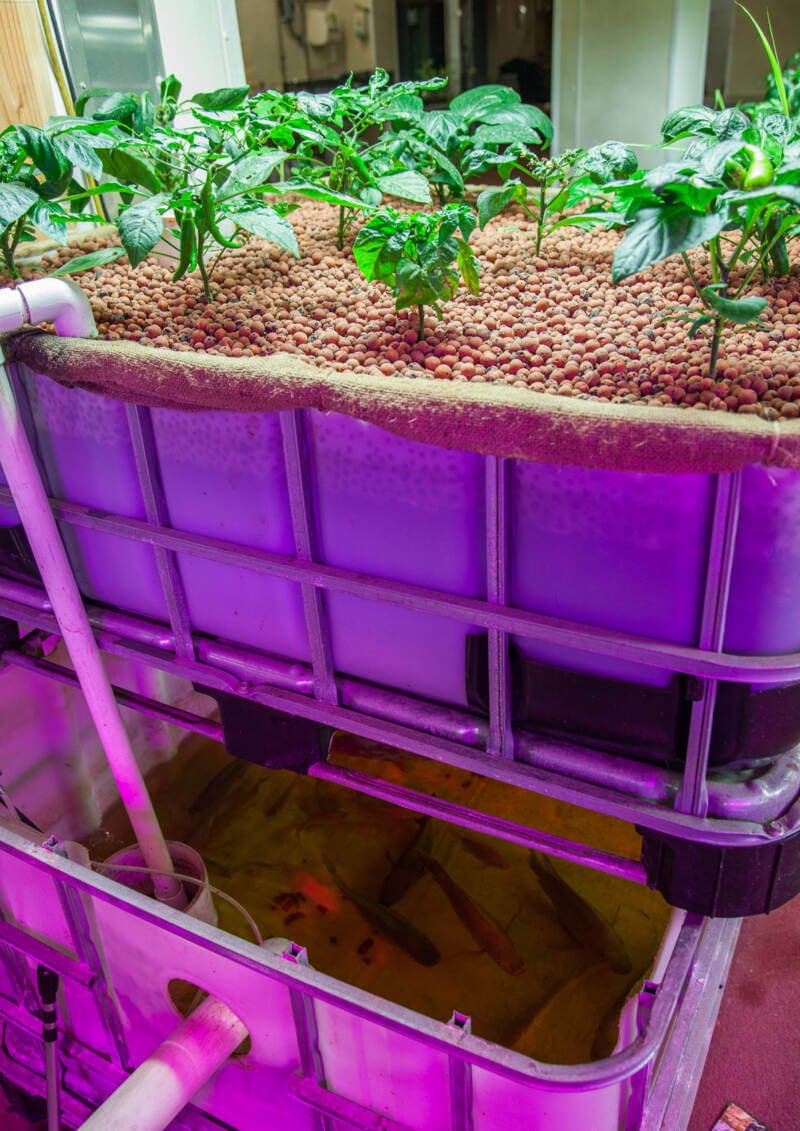
The key to the system’s success is a water use loop. Bacteria convert fish waste products into nitrates, taken up by the plants, and aid in plant growth. The clean water is then cycled back to the fish.
The benefits of this method are numerous. Water use is significantly reduced versus conventional farming methods because it is cycled within the loop.
There is no need for fertilizer because the plants get their nutrients from the fish waste and grow without soil. Most of all, you can harvest cleanly raised plants and fish!
The size of the system you put together depends on the types of plants you wish to raise and the number of fish you wish to keep.
Permitted species and stocking limits are governed by fish farming laws, so check with your local Fish and Wildlife division before building your aquaponic system. In some cases, permits and inspections may be necessary.
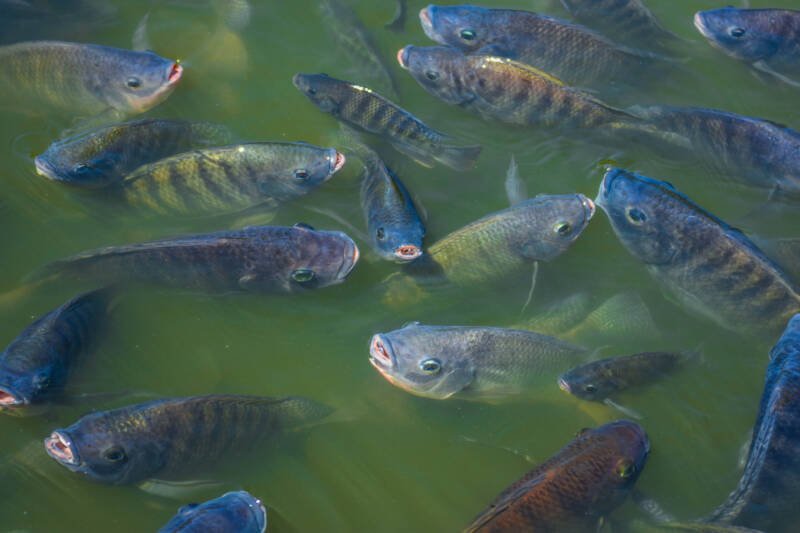
The following 12 fish species are those commonly kept in aquaponic systems.
Some are edible fish, which is a bonus as you can raise both meat and vegetable sources in the same place. Others are ornamental fish, raised for their beauty, but also with the added benefit of aiding your plant growth.
1. Tilapia

A tasty, edible fish that is ultimately versatile in recipes thrives in poor quality water with low dissolved oxygen and is a sturdy, hardy fish: the tilapia is an obvious choice for an aquaponics system.
This fish grows quickly, breeds readily, is incredibly disease resistant and is easy to feed.
Some variations of this popular fish can survive a wide temperature range, but they typically require warm water of 82 to 86 degrees Fahrenheit (28 to 30 degrees C).
While they can survive outside of this range, if water temperatures go below 50 degrees Fahrenheit (10 degrees C), your fish will not survive.
2. Catfish

If you are looking for an easy-to-raise, fast-growing, and tasty species, the catfish is it. A scavenging bottom feeder, this fish is not a picky eater.
While they survive in a range of temperatures, they will grow best when the water is 65 to 75 degrees Fahrenheit (18 to 24 degrees C).
You can usually procure and stock local catfish species. One of the more popular is the channel catfish, which is relatively inexpensive.
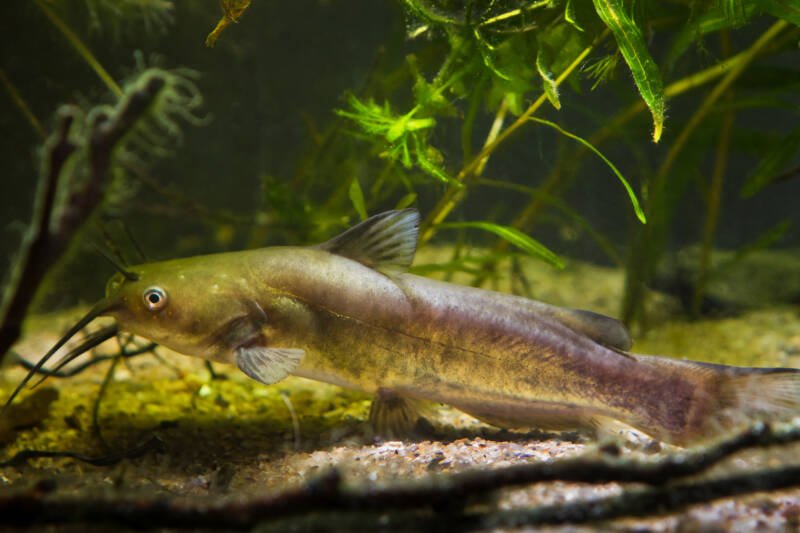
Keep on top of water conditions to reduce stress to this fish as poor water makes them susceptible to enteric septicemia of catfish (ESC), a bacterial infection that can be fatal.
Catfish are not territorial, so if you plan on keeping a multi-species tank, they tolerate other tank mates.
3. Perch

The perch is another excellent choice for an edible fish in your aquaponic system.
They are fast-growing and are large enough to harvest in just one year. They are also very hardy and retain high levels of healthy omega-3 oils. The downside: they can be difficult to breed in captivity.
The yellow perch, found in the United States and Canada, tolerates a wide water temperature range of 67 to 77 degrees Fahrenheit (19 to 25 degrees C). It also thrives in a large pH range of 6.5 to 8.5.
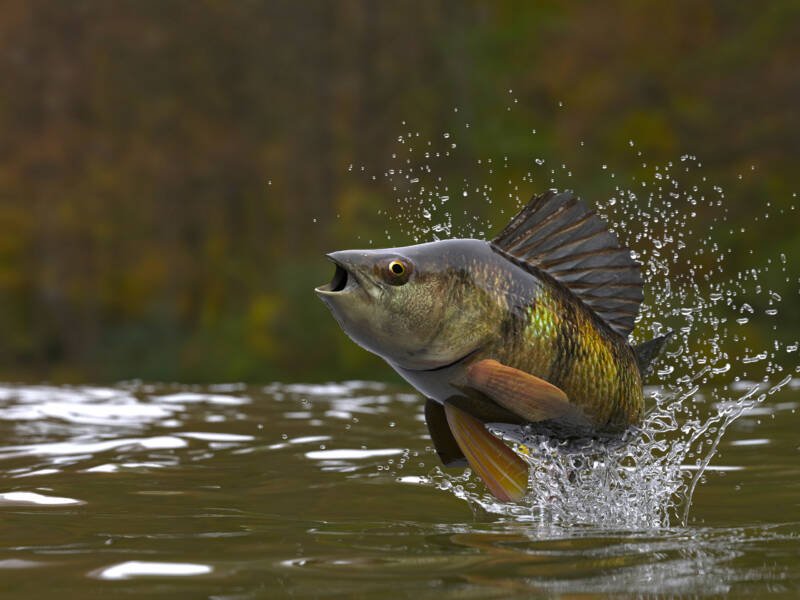
The jade perch and silver perch are native to Australia. These warm-water fish need a temperature between 75 to 80 degrees Fahrenheit (24 to 27 degrees C). They are good to pair with warm-weather crops.
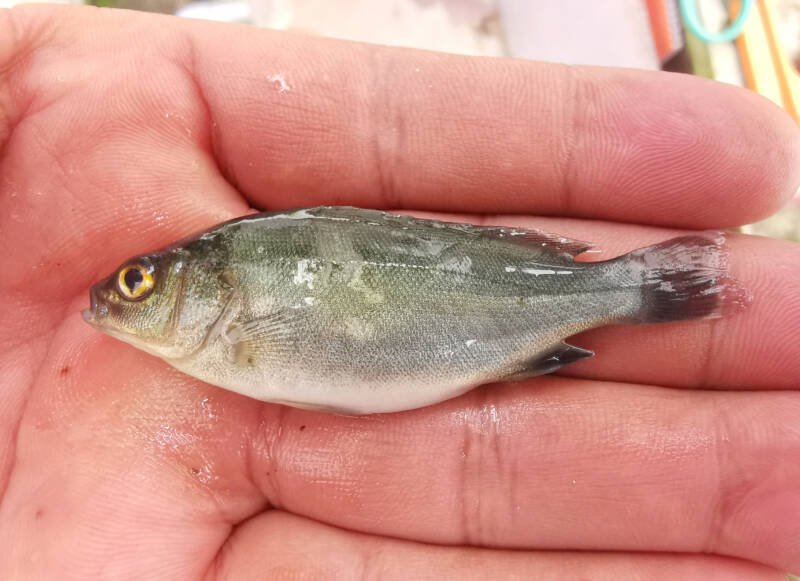
There may be laws regarding the importation of jade or silver perch. Check with your Fish and Wildlife division to determine the legality and logistics of keeping these fish.
4. Goldfish

Goldfish are popular fish used as ornamental species in outdoor ponds. They are easy to purchase for your aquaponic system, being readily available online and in stores.
They are hardy, disease-resistant, and can survive in various environmental conditions, including cold water.
These omnivores are easy to care for and eat a variety of foods, including commercial pellets.
As a bonus to your aquaponic system, they produce a good amount of waste, which your plants can use up.
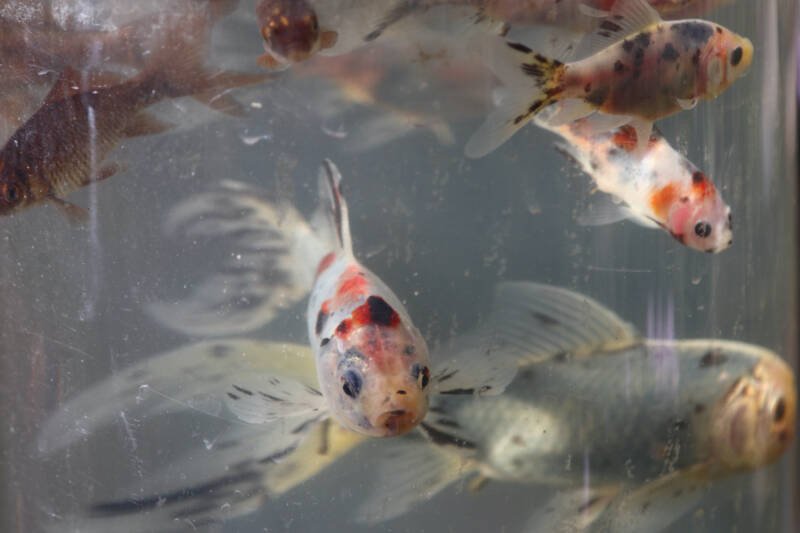
Goldfish can grow large, up to 12 inches in length. To keep multiple goldfish and give them plenty of swimming room, you will need a large tank.
They are peaceful so that you can mix them with other similarly sized species.
5. Barramundi

The barramundi originates in Asia and is another fast-growing, edible fish. Of all the fish listed, this one may be the most challenging to raise.
It prefers warm water in the range of 74 to 80 degrees Fahrenheit (23 to 27 degrees C).
Barramundi also needs a narrow pH range of 6.5 to 7.2 and high levels of dissolved oxygen. Invest in a tank heater and pH monitor to ensure the water quality stays within appropriate ranges.
These fish are carnivorous and must be fed meaty foods. They grow up to three feet (one meter) in length and require a huge tank.
They also produce a good amount of waste and can be more susceptible to infections if the water quality is poor, so routinely monitor the balance of your system.
6. Clown Loaches
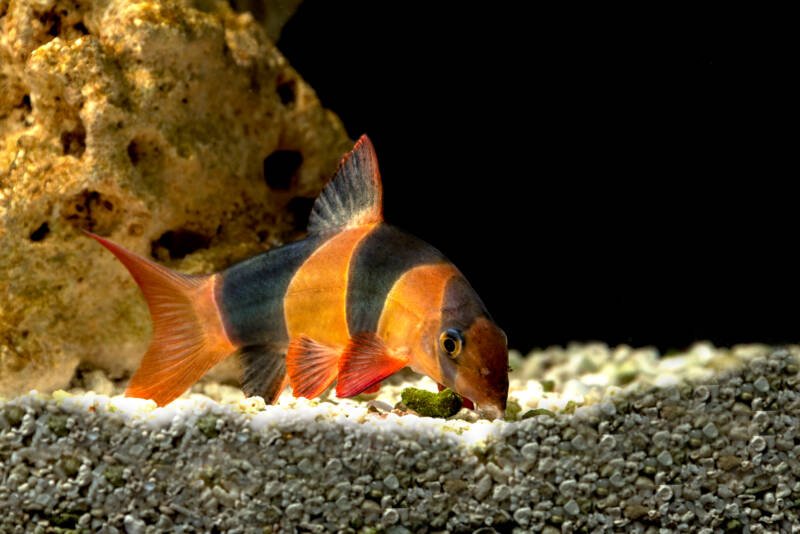
The clown loach is another great ornamental fish option.
This peaceful fish grows to a length of one foot (30 cm) and is native to Indonesia’s fast-moving streams. As such, provide some water movement in the tank.
These fish are also somewhat sensitive to bright light, so including shady spots and hiding spaces would increase their comfort.
Clown loaches are warm water fish, preferring a temperature range of 74 to 80 degrees Fahrenheit (23 to 27 degrees C).
Consider installing a heater for your tank if you live in a climate that would result in lower water temperatures.
7. Bass
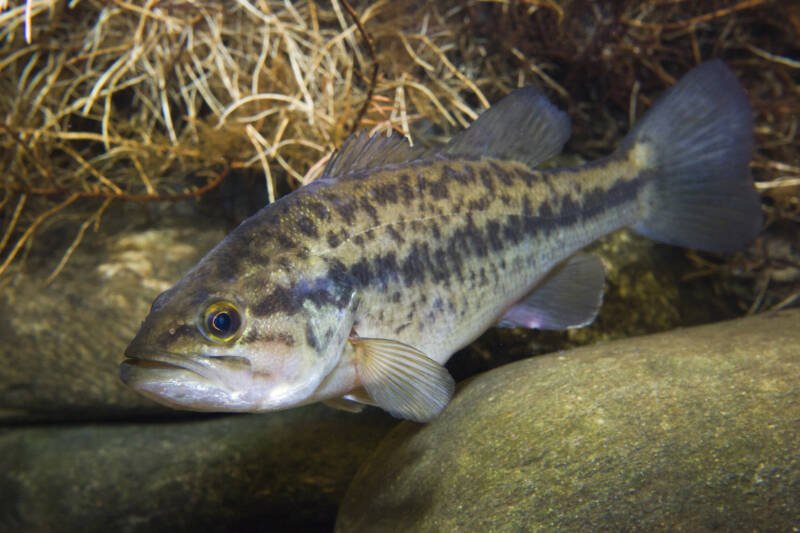
Bass is another popular edible species in aquaponics. Although not recommended for someone new to keeping them, these fish produce a good amount of tasty meat, growing up to 12 pounds (5.4 kg) in weight.
They are also fast-growing, taking under two years to reach maturity.
These fish are less tolerant to extremes in water conditions, but there are exceptions depending on the type of bass.
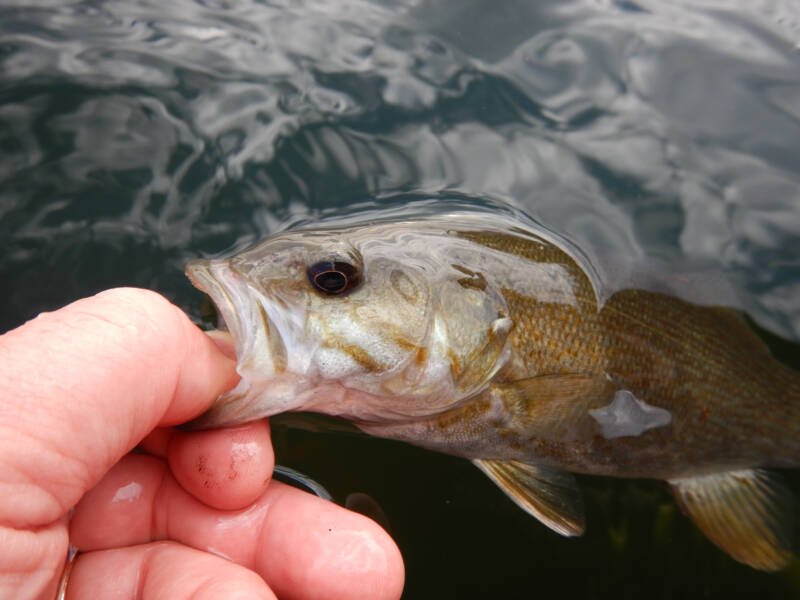
For example, the striped bass can tolerate low dissolved oxygen levels, and largemouth bass cannot tolerate bright light.
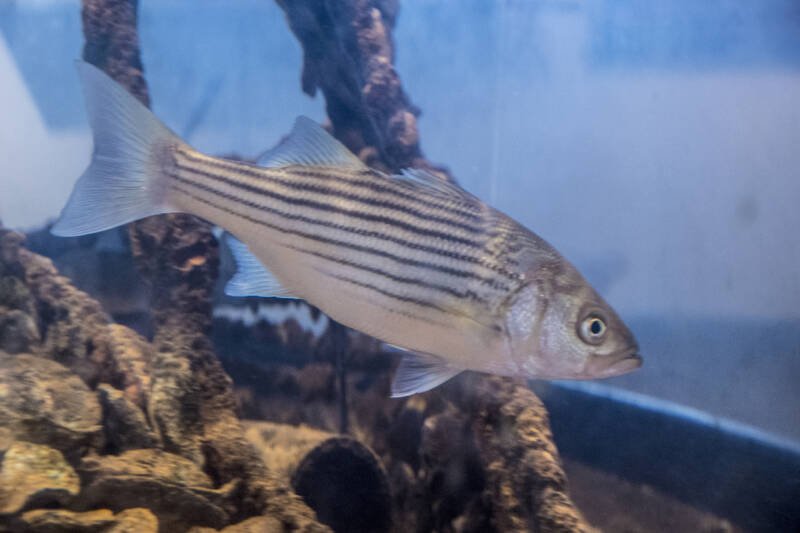
For optimal health and growth, keep the water temperature between 65 and 75 degrees Fahrenheit (18 to 24 degrees C).
8. Koi and Carp

Koi are long-time favorites as ornamental pond fish. In addition to their beauty, their use in an aquaponics system is quite valuable.
These fish are very disease-resistant and long-lived, with a lifespan of up to 35 years. They can grow up to two feet in length, so you will need a large tank.

These sturdy fish can survive a wide temperature range, anywhere from 35 to 85 degrees Fahrenheit (2 to 29 degrees C).
Although that makes them popular fish for year-round and cold water outdoor systems, to avoid stress to the fish, it is best to avoid rapidly shifting water temperatures. Monitor the pH of your water to keep it around 7 to 8.
9. Trout
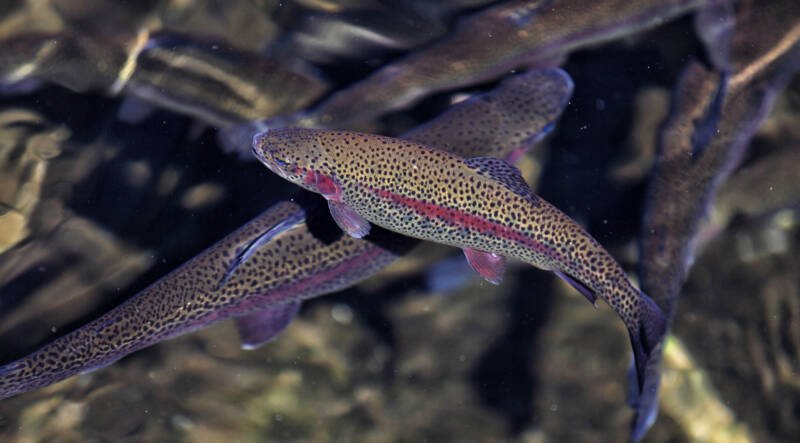
Trout are hardy, tasty, and tolerate a range of water conditions. They are fast-growing fish that take one year to mature and are easy to maintain in an aquaponic system.
However, keep on top of your water conditions as these fish require a higher level of dissolved oxygen than other species. If stressed, they can develop ailments such as fin rot.
If you live in a colder climate, the rainbow trout may be a good choice. They are cold-water fish that tolerate a temperature range from 38 to 75 degrees Fahrenheit (2 to 24 degrees C).
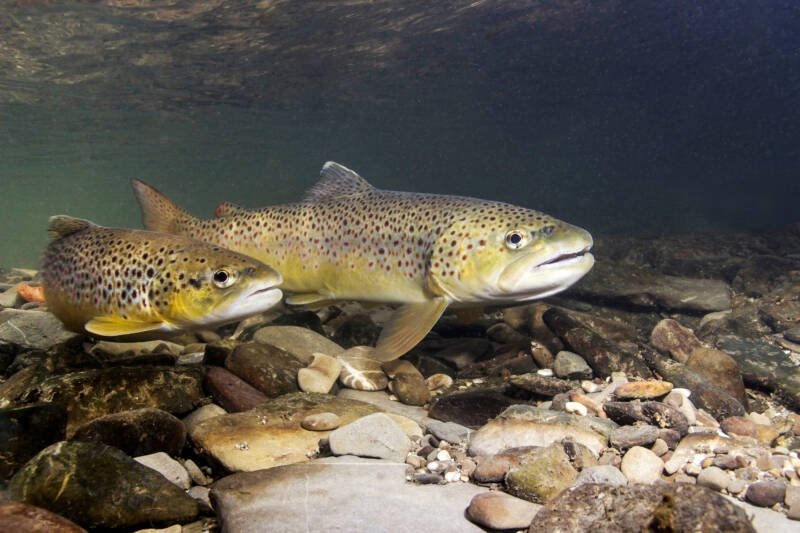
This makes them perfect for growing crops that likewise prefer cooler temperatures.
10. Pacu

The pacu is related to the piranha but without the reputation. It is omnivorous and favors plant-based foods in adult life.
The plus side of the pacu is that they produce a decent amount of waste – perfect for feeding your plants.
Pacu are a peaceful species, and you can pair them with other similarly sized fish. They grow large and reach an adult length of over three feet (one meter)!
These fish require plenty of swimming space and startle easily, causing them to zoom around the tank.
They are warm-water fish, requiring a temperature range of 75 to 81 degrees Fahrenheit (24 to 27 degrees C). The warm water can result in lower oxygen levels, so you may need to include aeration.
11. Crappie
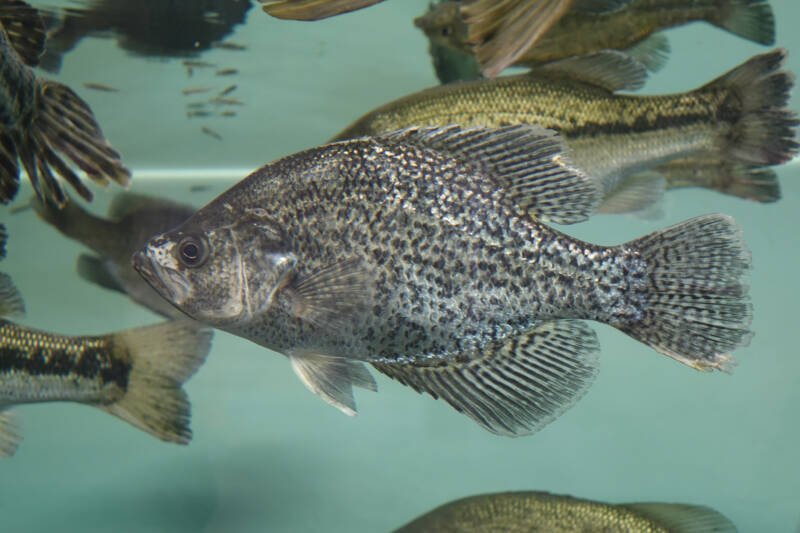
The crappie is another hardy, edible fish that tolerates a large temperature range, anywhere from 55 to 80 degrees Fahrenheit (13 to 27 C).
It grows a bit more slowly than some of the other fish listed here, reaching sexual maturity in one year but continuing to grow in length in subsequent years.
Depending on the species, the crappie can reach anywhere between five and 20 inches (13 to 51 cm) in length.
Crappies should be kept in a species-only tank, as they can be territorial regarding their eggs.
They may be a challenge to feed and prefer minnows and aquatic insects. You can expect to have your crappie around for up to seven years if you care for them well.
12. Bluegill

The bluegill is the ultimate choice for a beginner to aquaponics. They are easy to care for, edible, and inexpensive to purchase.
They thrive in the widest temperature and pH ranges of any of the fish listed here, making them great for year-round use.
While they can survive in both low and high temperatures, they do best in the 65 to 80 degrees Fahrenheit (18 to 27 degrees C) range.
Bluegills are not fussy eaters and are omnivorous, readily accepting commercial pellets, vegetables, insects, and algae.
They are peaceful tank mates and can be paired with other species. They are very hardy; however, keep an eye out for red sore disease, which is easily treated.
Closing Thoughts
You have many choices of fish species to include in your aquaponics system.
When making your decision, consider the level of expertise required to raise the fish, tank size needed, and environmental factors that would require the need for a heater or aeration.
Whether you go with an ornamental fish or a tank full of edible fish, the benefits provided toward growing your plants will be significant.
What fish have you raised in your aquaponic tanks?
What are your favorite crops with which to pair them?
We would love to hear from you!